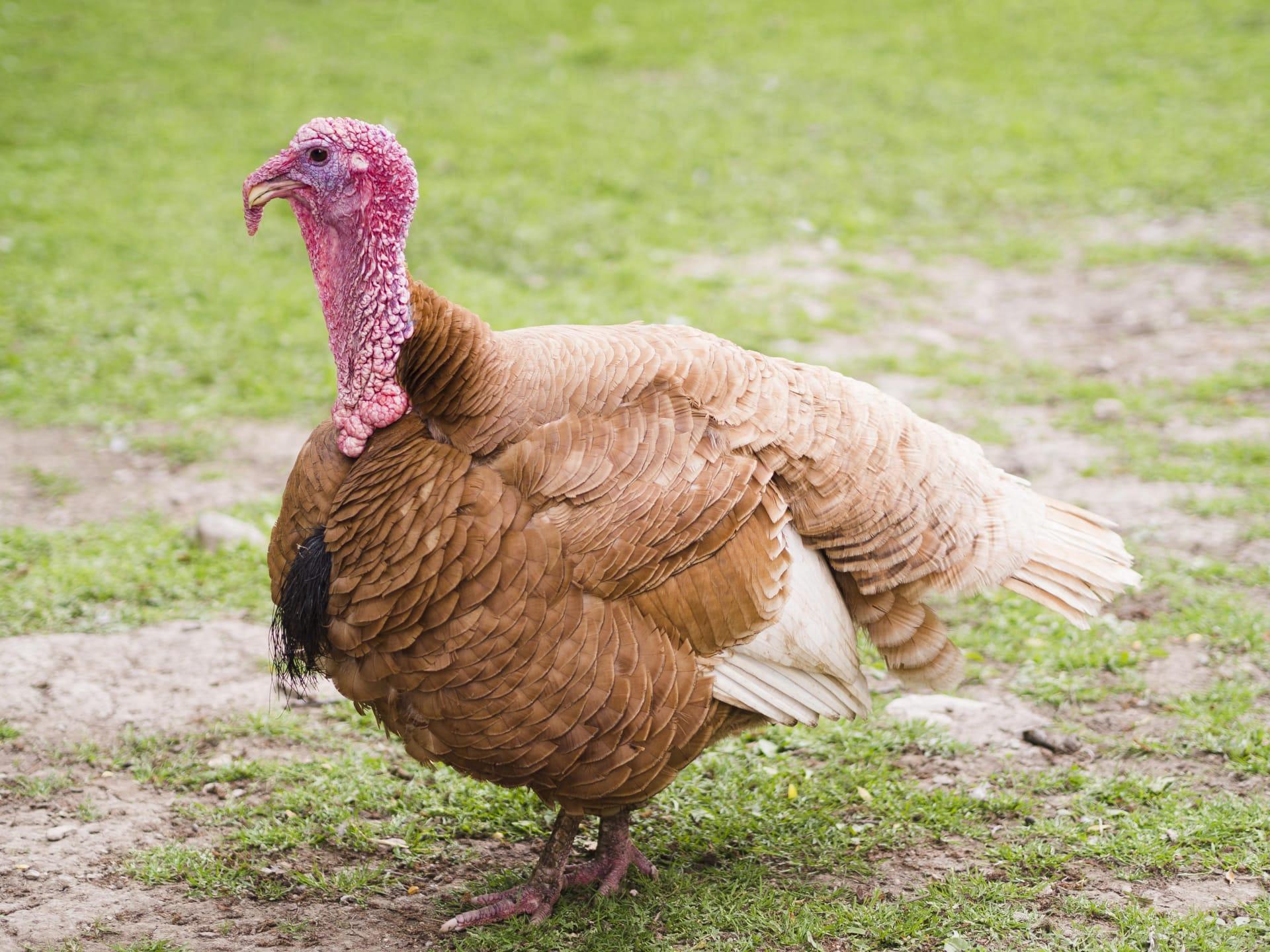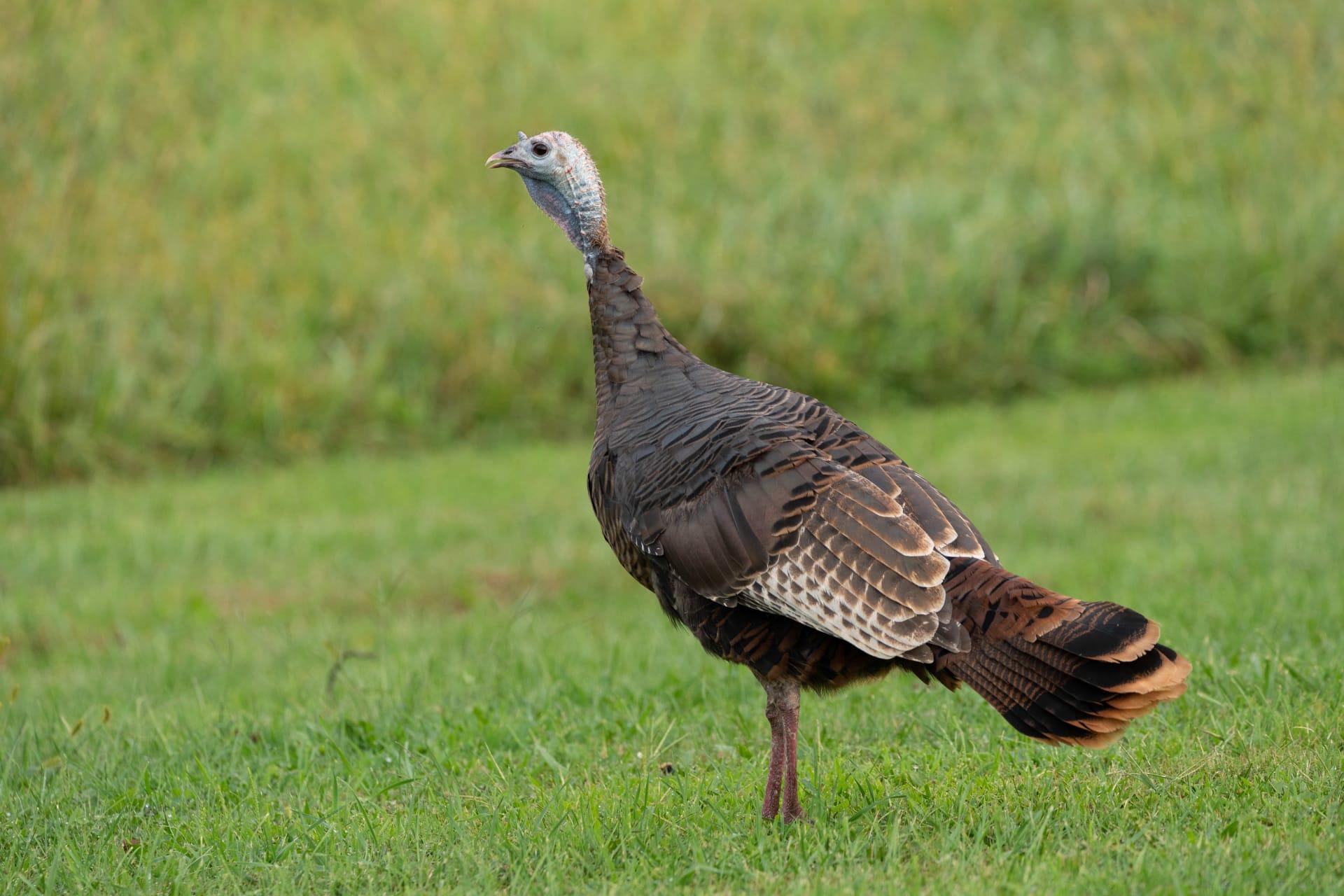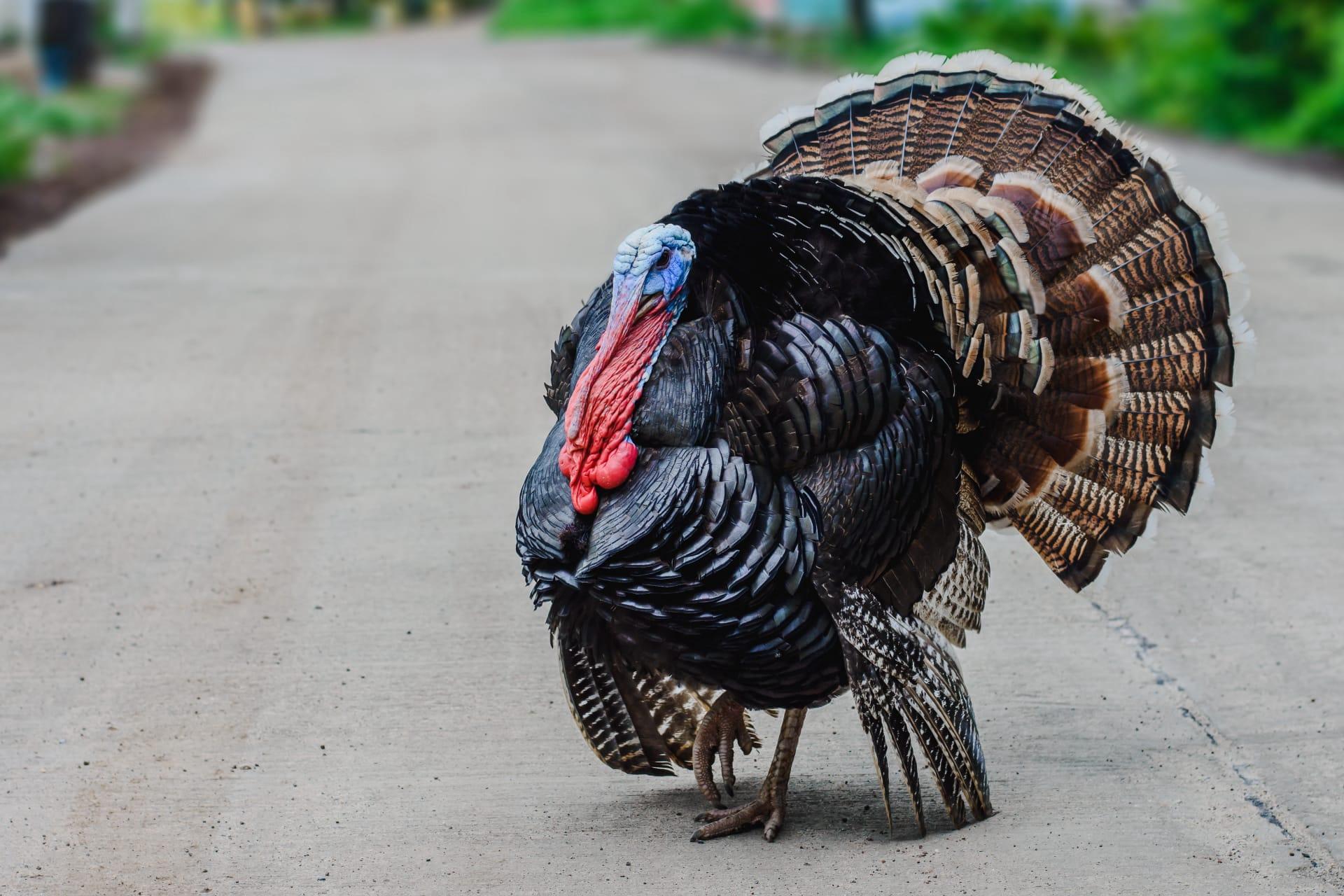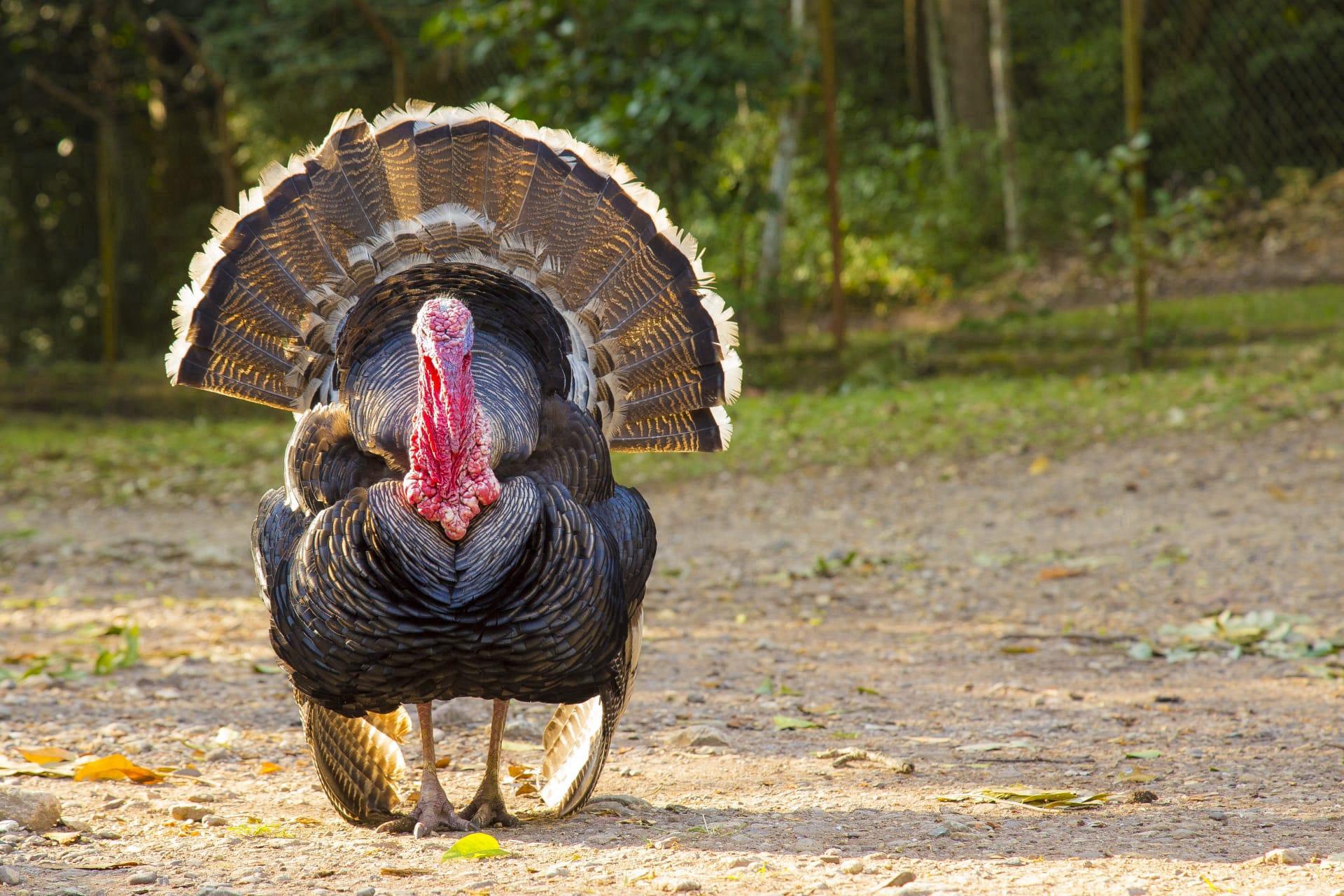Turkey Characteristics
- Home /
- Mini Encyclopedia /
- Animal /
- Turkey Characteristics
1
Turkeys are fascinating creatures, with their physical characteristics revealing much about their adaptability in the wild. Adult wild turkeys typically weigh between 5.4 to 11 kilograms, with males, known as toms, being heavier than females, or hens. Toms can reach up to 48 inches in length, while hens are slightly smaller, generally around 37 inches. Turkeys have a lifespan ranging from 3 to 5 years in the wild, though some can live up to 10 years under optimal conditions. Their bodies are covered in an array of feathers, displaying a spectrum of colors like bronze, gold, and even iridescent greens and blues, especially noticeable in sunlight.
The most distinctive organ of a turkey is its snood, an elongated, fleshy protuberance that hangs from the top of the beak. During courtship displays, the snood engorges and changes color, becoming redder as the turkey becomes more excited or aggressive. This transformation serves as a visual signal to other turkeys. The length of a tom's snood correlates with his health and genetic quality; longer snoods are often associated with more robust immune systems, making them more attractive to hens for mating.

2
Question: Can turkeys fly?
Answer: Contrary to common belief, wild turkeys are adept flyers. They roost in trees at night to avoid predators and can fly at speeds of up to 55 miles per hour over short distances. Their flight is usually low to the ground and covers less than a quarter mile. Domestic turkeys, however, are generally too heavy to fly due to selective breeding for more meat. This breeding has resulted in larger body sizes, which inhibit the flight capabilities seen in their wild counterparts.

3
Turkeys are known for their unique movement characteristics. On the ground, they are quite fast, able to run at speeds up to 20-25 miles per hour. This speed is crucial for evading predators in their natural habitat. Their powerful legs not only assist in running but also in scratching the ground to uncover food.
In terms of feeding habits, turkeys are omnivores. They primarily feed on nuts, seeds, fruits, insects, and small amphibians. Their foraging behavior is a combination of pecking and scratching. Turkeys have a keen sense of vision, which aids in detecting food and predators. Their gizzard, a muscular part of the stomach, helps in grinding up hard foods like nuts and seeds, an essential aspect of their diet.

4
Turkeys thrive in various environments, ranging from hardwood forests to grasslands and swamps. They require a habitat with a combination of open areas for feeding, dense vegetation for cover, and large trees for roosting. This adaptability to diverse environments has been key to their survival and distribution across North America.
Reproduction is a significant part of the turkey's life cycle. During the spring mating season, males display their plumage, puff up their bodies, and perform a unique 'gobble' sound to attract females. After mating, the female lays a clutch of about 10-12 eggs, which she incubates for about 28 days. The young turkeys, called poults, are precocial and can leave the nest within 24 hours of hatching, following their mother and learning to forage.

5
Book: "The Wild Turkey: Biology and Management" edited by James G. Dickson provides an extensive look into the life and habits of wild turkeys. Published in the United States in 1992, this book combines contributions from various experts, offering insights into turkey behavior, physiology, and conservation efforts. It's a comprehensive resource for understanding these birds in their natural habitat.
Book: "Illumination in the Flatwoods" by Joe Hutto, published in 1995 in the United States, is an engaging narrative about the author's experience raising a group of wild turkey hatchlings in Florida. This book provides an intimate and detailed account of turkey behavior, social dynamics, and emotional depth, offering readers a unique perspective on these often misunderstood birds.